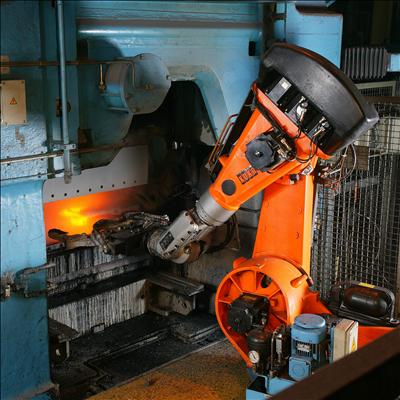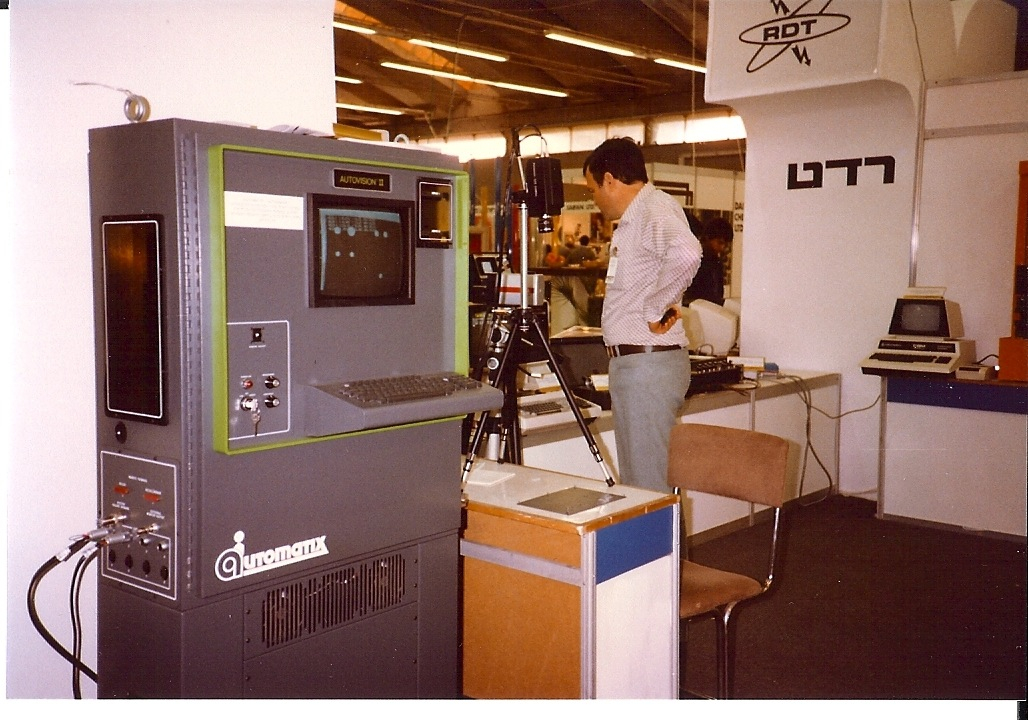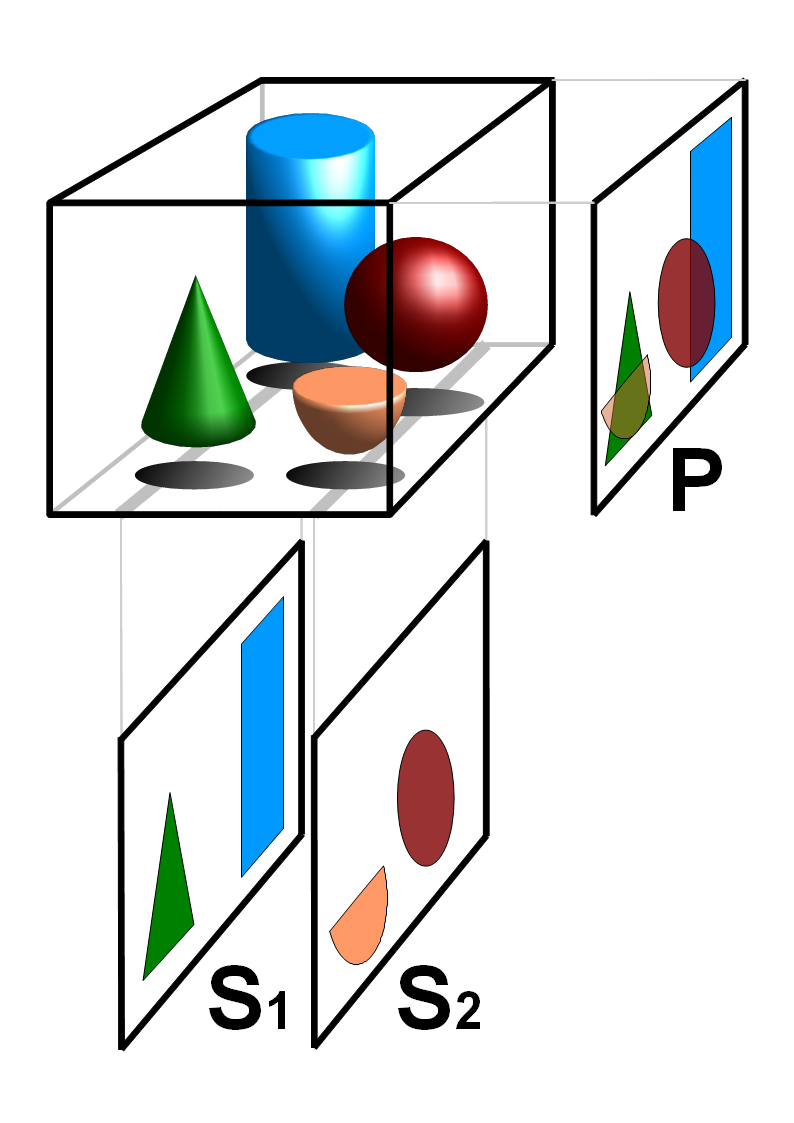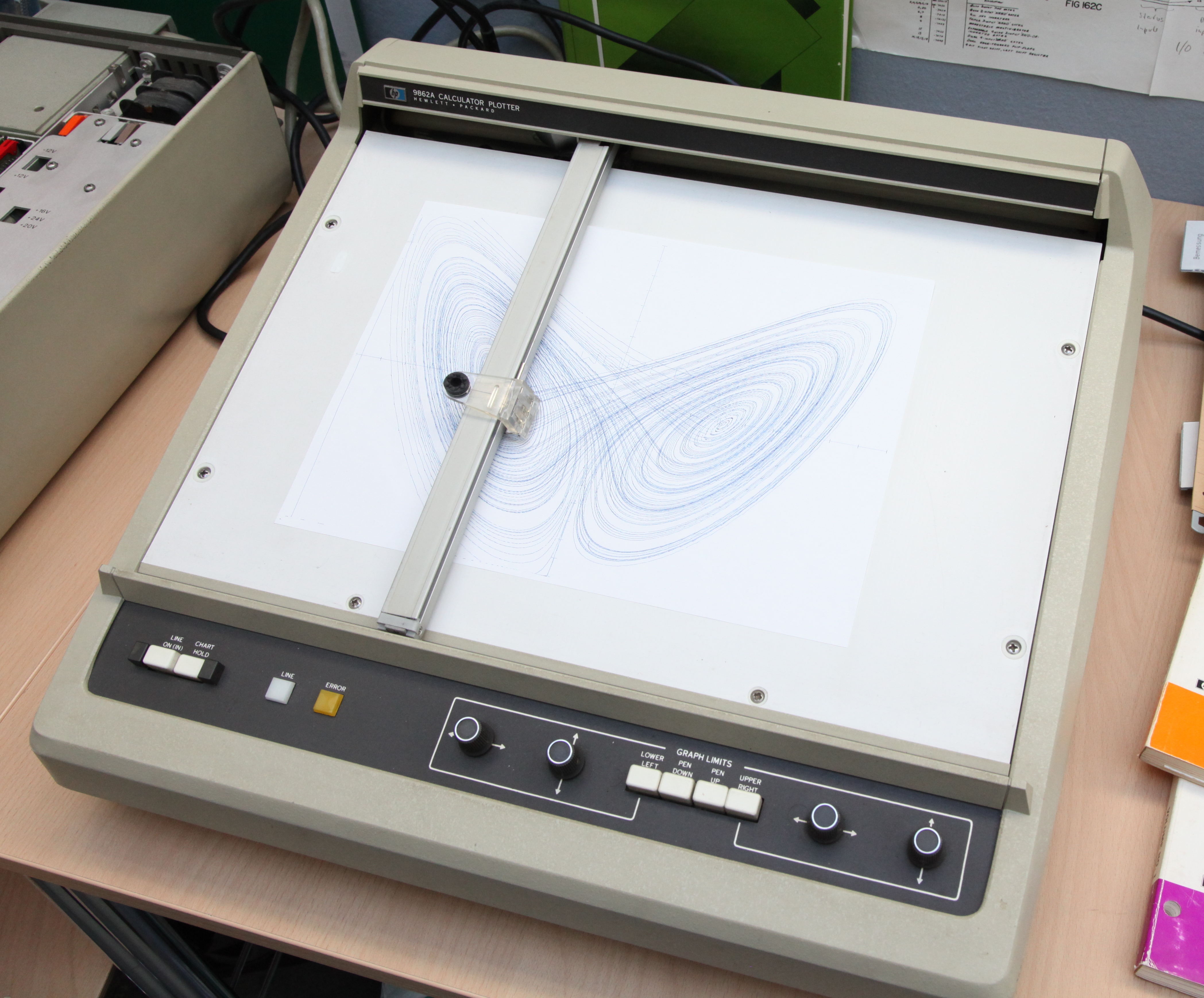|
5DX
The 5DX was an automated X-ray inspection robot, which belonged to the set of automated test equipment robots and industrial robots utilizing machine vision. The 5DX was manufactured by Hewlett Packard, then later Agilent Technologies when HP was split into Hewlett Packard and Agilent Technologies in 1999. The 5DX performed a non-destructive structural test using laminography ( tomography) to take 3D images of an assembled printed circuit board using 8-bit grayscale to indicate solder thickness. It was used in the assembled printed circuit board (PCB) electronics manufacturing industry to provide process feedback to a surface mount technology assembly line, as well as defect capture. The 5DX was one of several tools used by many companies in the electronics manufacturing services sector to provide a means of inspecting both the visible and hidden solder connections between the printed circuit boards and components attached to those printed circuit boards. These solder con ... [...More Info...] [...Related Items...] OR: [Wikipedia] [Google] [Baidu] |
Agilent Technologies
Agilent Technologies, Inc. is an American life sciences company that provides instruments, software, services, and consumables for the entire laboratory workflow. Its global headquarters is located in Santa Clara, California. Agilent was established in 1999 as a spin-off from Hewlett-Packard. The resulting IPO of Agilent stock was the largest in the history of Silicon Valley at the time. Agilent focuses its products and services on six markets: food, environmental and forensics, pharmaceutical, diagnostics, chemicals and advanced materials, and research. From 1999 to 2014, the company also produced test and measurement equipment for electronics; that division was spun off to form Keysight. Products and services Agilent serves analytical laboratories and the clinical and routine diagnostics markets with a full suite of technology platforms. These include: automation, bioreagents, FISH probes, gas and liquid chromatography, immunohistochemistry, informatics, mass spectr ... [...More Info...] [...Related Items...] OR: [Wikipedia] [Google] [Baidu] |
Automated X-ray Inspection
Automated inspection (AXI) is a technology based on the same principles as automated optical inspection (AOI). It uses as its source, instead of visible light, to automatically inspect features, which are typically hidden from view. Automated X-ray inspection is used in a wide range of industries and applications, predominantly with two major goals: # Process optimization, i.e. the results of the inspection are used to optimize following processing steps, # Anomaly detection, i.e. the result of the inspection serve as a criterion to reject a part (for scrap or re-work). Whilst AOI is mainly associated with electronics manufacturing (due to widespread use in PCB manufacturing), AXI has a much wider range of applications. It ranges from the quality check of alloy wheels to the detection of bone fragments in processed meat. Wherever large numbers of very similar items are produced according to a defined standard, automatic inspection using advanced image processing and pattern reco ... [...More Info...] [...Related Items...] OR: [Wikipedia] [Google] [Baidu] |
Automated Test Equipment
Automatic test equipment or automated test equipment (ATE) is any apparatus that performs tests on a device, known as the device under test (DUT), equipment under test (EUT) or unit under test (UUT), using automation to quickly perform measurements and evaluate the test results. An ATE can be a simple computer-controlled digital multimeter, or a complicated system containing dozens of complex test instruments (real or simulated electronic test equipment) capable of automatically testing and diagnosing faults in sophisticated electronic packaged parts or on wafer testing, including system on chips and integrated circuits. Where it is used ATE is widely used in the electronic manufacturing industry to test electronic components and systems after being fabricated. ATE is also used to test avionics and the electronic modules in automobiles. It is used in military applications like radar and wireless communication. In the semiconductor industry Semiconductor ATE, named for testin ... [...More Info...] [...Related Items...] OR: [Wikipedia] [Google] [Baidu] |
Industrial Robot
An industrial robot is a robot system used for manufacturing. Industrial robots are automated, programmable and capable of movement on three or more axes. Typical applications of robots include robot welding, welding, painting, assembly, Circular economy, disassembly, Automated storage and retrieval system, pick and place for printed circuit boards, packaging and labeling, Palletizer, palletizing, product inspection, and testing; all accomplished with high endurance, speed, and precision. They can assist in material handling. In the year 2020, an estimated 1.64 million industrial robots were in operation worldwide according to International Federation of Robotics, International Federation of Robotics (IFR). Types and features There are six types of industrial robots. Articulated robots Articulated robots are the most common industrial robots. They look like a Arm, human arm, which is why they are also called robotic arm or Manipulator (device), manipulator arm. Their art ... [...More Info...] [...Related Items...] OR: [Wikipedia] [Google] [Baidu] |
Machine Vision
Machine vision (MV) is the technology and methods used to provide imaging-based automatic inspection and analysis for such applications as automatic inspection, process control, and robot guidance, usually in industry. Machine vision refers to many technologies, software and hardware products, integrated systems, actions, methods and expertise. Machine vision as a systems engineering discipline can be considered distinct from computer vision, a form of computer science. It attempts to integrate existing technologies in new ways and apply them to solve real world problems. The term is the prevalent one for these functions in industrial automation environments but is also used for these functions in other environment vehicle guidance. The overall machine vision process includes planning the details of the requirements and project, and then creating a solution. During run-time, the process starts with imaging, followed by automated analysis of the image and extraction of the requir ... [...More Info...] [...Related Items...] OR: [Wikipedia] [Google] [Baidu] |
Hewlett Packard
The Hewlett-Packard Company, commonly shortened to Hewlett-Packard ( ) or HP, was an American multinational information technology company headquartered in Palo Alto, California. HP developed and provided a wide variety of hardware components, as well as software and related services to consumers, small and medium-sized businesses ( SMBs), and large enterprises, including customers in the government, health, and education sectors. The company was founded in a one-car garage in Palo Alto by Bill Hewlett and David Packard in 1939, and initially produced a line of electronic test and measurement equipment. The HP Garage at 367 Addison Avenue is now designated an official California Historical Landmark, and is marked with a plaque calling it the "Birthplace of 'Silicon Valley'". The company won its first big contract in 1938 to provide test and measurement instruments for Walt Disney's production of the animated film '' Fantasia'', which allowed Hewlett and Packard to formally est ... [...More Info...] [...Related Items...] OR: [Wikipedia] [Google] [Baidu] |
Tomography
Tomography is imaging by sections or sectioning that uses any kind of penetrating wave. The method is used in radiology, archaeology, biology, atmospheric science, geophysics, oceanography, plasma physics, materials science, cosmochemistry, astrophysics, quantum information, and other areas of science. The word ''tomography'' is derived from Ancient Greek τόμος ''tomos'', "slice, section" and γράφω ''graphō'', "to write" or, in this context as well, "to describe." A device used in tomography is called a tomograph, while the image produced is a tomogram. In many cases, the production of these images is based on the mathematical procedure tomographic reconstruction, such as X-ray computed tomography technically being produced from multiple projectional radiographs. Many different reconstruction algorithms exist. Most algorithms fall into one of two categories: filtered back projection (FBP) and iterative reconstruction (IR). These procedures give inexact results: ... [...More Info...] [...Related Items...] OR: [Wikipedia] [Google] [Baidu] |
Printed Circuit Board
A printed circuit board (PCB; also printed wiring board or PWB) is a medium used in electrical and electronic engineering to connect electronic components to one another in a controlled manner. It takes the form of a laminated sandwich structure of conductive and insulating layers: each of the conductive layers is designed with an artwork pattern of traces, planes and other features (similar to wires on a flat surface) etched from one or more sheet layers of copper laminated onto and/or between sheet layers of a non-conductive substrate. Electrical components may be fixed to conductive pads on the outer layers in the shape designed to accept the component's terminals, generally by means of soldering, to both electrically connect and mechanically fasten them to it. Another manufacturing process adds vias: plated-through holes that allow interconnections between layers. Printed circuit boards are used in nearly all electronic products. Alternatives to PCBs include wire ... [...More Info...] [...Related Items...] OR: [Wikipedia] [Google] [Baidu] |
Surface Mount Technology
Surface-mount technology (SMT), originally called planar mounting, is a method in which the electrical components are mounted directly onto the surface of a printed circuit board (PCB). An electrical component mounted in this manner is referred to as a surface-mount device (SMD). In industry, this approach has largely replaced the through-hole technology construction method of fitting components, in large part because SMT allows for increased manufacturing automation which reduces cost and improves quality. It also allows for more components to fit on a given area of substrate. Both technologies can be used on the same board, with the through-hole technology often used for components not suitable for surface mounting such as large transformers and heat-sinked power semiconductors. An SMT component is usually smaller than its through-hole counterpart because it has either smaller leads or no leads at all. It may have short pins or leads of various styles, flat contacts, a matrix ... [...More Info...] [...Related Items...] OR: [Wikipedia] [Google] [Baidu] |
Electronics Manufacturing Services
Electronics Manufacturing Services (EMS) is a term used for companies that design, manufacture, test, distribute, and provide return/repair services for electronic components and assemblies for original equipment manufacturers (OEMs). The concept is also referred to as Electronics Contract Manufacturing (ECM). Many consumer electronics are built in China, due to maintenance cost, availability of materials, and speed as opposed to other countries such as the United States. Cities such as Shenzhen and Penang have become important production centres for the industry, attracting many consumer electronics companies such as Apple Inc. Some companies such as Flex and Wistron are Original design manufacturers and providers of Electronics manufacturing services. History The EMS industry was initially established in 1961 by SCI Systems of Huntsville Alabama. The industry realized its most significant growth in the 1980s; at the time, most electronics manufacturing for large-scale product r ... [...More Info...] [...Related Items...] OR: [Wikipedia] [Google] [Baidu] |
Gantry Robot
A Cartesian coordinate robot (also called linear robot) is an industrial robot whose three principal axes of control are linear (i.e. they move in a straight line rather than rotate) and are at right angles to each other. The three sliding joints correspond to moving the wrist up-down, in-out, back-forth. Among other advantages, this mechanical arrangement simplifies the robot control arm solution. It has high reliability and precision when operating in three-dimensional space. As a robot coordinate system, it is also effective for horizontal travel and for stacking bins. Configurations Robots have mechanisms consisting of rigid links connected together by joints with either linear (prismatic ''P'') or rotary (revolute ''R'') motion, or combinations of the two. Active prismatic ''P'' and active revolute ''R'' joints are driven by motors under programmable control to manipulate objects to perform complex automated tasks. The linear motion of active prismatic ''P'' jo ... [...More Info...] [...Related Items...] OR: [Wikipedia] [Google] [Baidu] |
.jpeg/1200px-Space_Aggressors_test_Red_Flag_Airmen_(2743147).jpeg)







